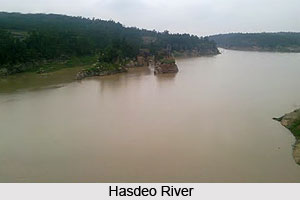Water Resources of Central India fulfil the various needs of the folks of this region. A number of natural and man made resources are found the states of central India. These resources also used for irrigation purpose in agriculture.
 Natural Water Resources
Natural Water Resources
Central India has been blessed with ample water resources. As compared to other states, Chhattisgarh is affluent in terms of rainfall. The average rainfall of the state has been recorded around 1400 mm. Rainfall in Chhattisgarh mainly occurs during monsoon, during the period of July to September. Apart from rainfall, the major water resource of the state comprises of rivers and ground water. The significant rivers of the state include Mahanadi, Indravati, Hasdeo, Sheonath, Arpa, Rehar, Kelo etc. These rivers form the lifeline of the socio economic development of Chhattisgarh. Mainly the total area of the state can be geographically divided in five river basins viz. Mahanadi Basin, Godavari Basin, Ganga Basin, Narmada Basin and Brahmani Basin.
Man Made Water Resources
Since ancient times, a number of man made water resources have served the people of the state. History of the state states that many tanks were built in villages during the reign of Kalchuri Kings. Till date, the various daily needs of the villagers are served by small tanks constructed almost in all the villages. Man made water resources also play an important role in irrigating the fields of the state. About 75 percent of the irrigation is carried out with the aid of canals and the rest 25 percent is done with the help of tanks, tube wells and wells.
Central India is rich in terms of water resources. They form the life line of the states of this region. But the states do not solely dependent on natural resources and owing to the upcoming problems of drought, a number of artificial water resources have also been built to combat the problems of drought and water scarcity.
This article is a stub. You can enrich by adding more information to it. Send your Write Up to content@indianetzone.com



















